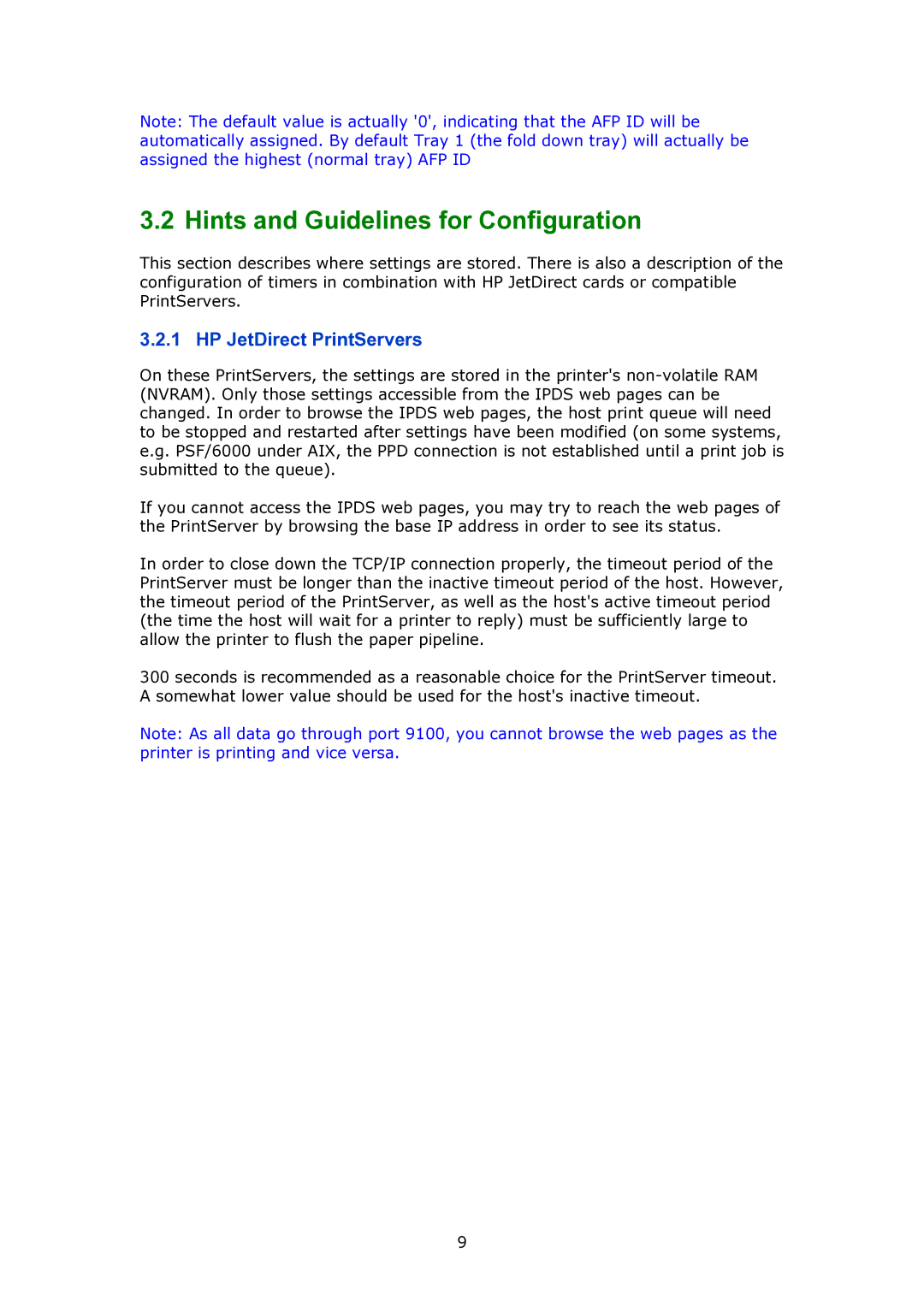Note: The default value is actually '0', indicating that the AFP ID will be automatically assigned. By default Tray 1 (the fold down tray) will actually be assigned the highest (normal tray) AFP ID
3.2 Hints and Guidelines for Configuration
This section describes where settings are stored. There is also a description of the configuration of timers in combination with HP JetDirect cards or compatible PrintServers.
3.2.1 HP JetDirect PrintServers
On these PrintServers, the settings are stored in the printer's
If you cannot access the IPDS web pages, you may try to reach the web pages of the PrintServer by browsing the base IP address in order to see its status.
In order to close down the TCP/IP connection properly, the timeout period of the PrintServer must be longer than the inactive timeout period of the host. However, the timeout period of the PrintServer, as well as the host's active timeout period (the time the host will wait for a printer to reply) must be sufficiently large to allow the printer to flush the paper pipeline.
300 seconds is recommended as a reasonable choice for the PrintServer timeout. A somewhat lower value should be used for the host's inactive timeout.
Note: As all data go through port 9100, you cannot browse the web pages as the printer is printing and vice versa.
9
